What Is Modal Fabric And Is It Really Worth the Hype?
Have you noticed how Calvin Klein boxers feel better than before? This might be because of the modal fabrics they use. Some call it the fabric of the future while others just like how comfy it feels.
Made from the pulp of beech trees, modal fabric is a semi-synthetic, soft and stretchy material that boasts superior durability and comfort to cotton. It is praised for its sustainable manufacturing process and has become the ‘smart fabric’ of our time.
Online reviewers are obsessed with its silky and smooth feel. Consensus is that it is more preferable to other common fabrics around now; So let’s find out if modal is truly worth the hype!
What Is Modal Fabric?
Modal fabric is a bio-based fabric manufactured from spinning cellulose from beech trees. Since its creation in the 20th century, modal has taken the fashion industry by storm, even being referred to as the ‘underwear fabric’ for its stretchy and durable nature.
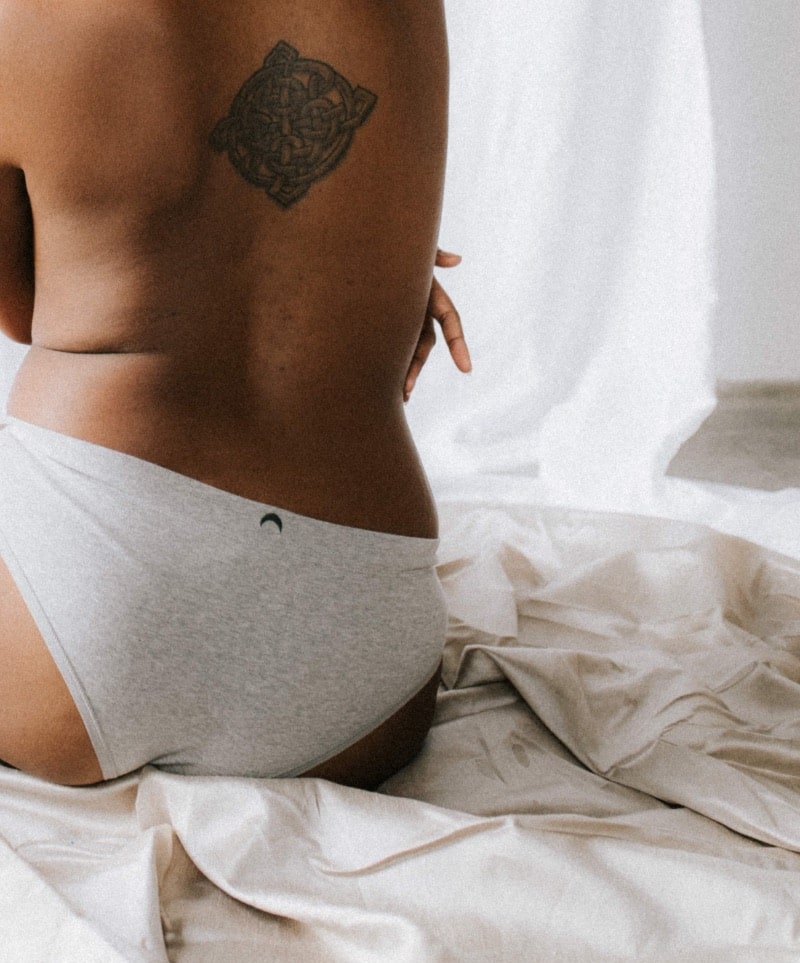
The tree itself is native to North America, Asia and Europe. Although it is most abundant in northern Europe, the fabric was first made in Japan in the 1950’s. Since then, it has only become increasingly popular.
Besides being softer and longer-lasting than the more common cotton, modal also boasts a greater eco-conscience than the cotton plant because beech trees don’t require as much water to develop. Modal’s manufacturing process consumes roughly 10-20 times less water than cotton.
According to a recent discovery published in the American Chem Society the comfortable, conductive, highly sensitive features of the fabric, combined with its superior strain range allows it to act as a strain sensor and it can accurately detect human motion and skin humidity; meaning it could be used for wearable gadgets used by athletes.
Since modal is a semi-synthetic fabric and its production is more sustainable than cotton, we broke down the process for you in the next section.
How Is Modal Fabric Produced?
Modal is a generic name for a semi-synthetic upgrade to viscose. The fabric is made by spinning the cellulose of beech trees.
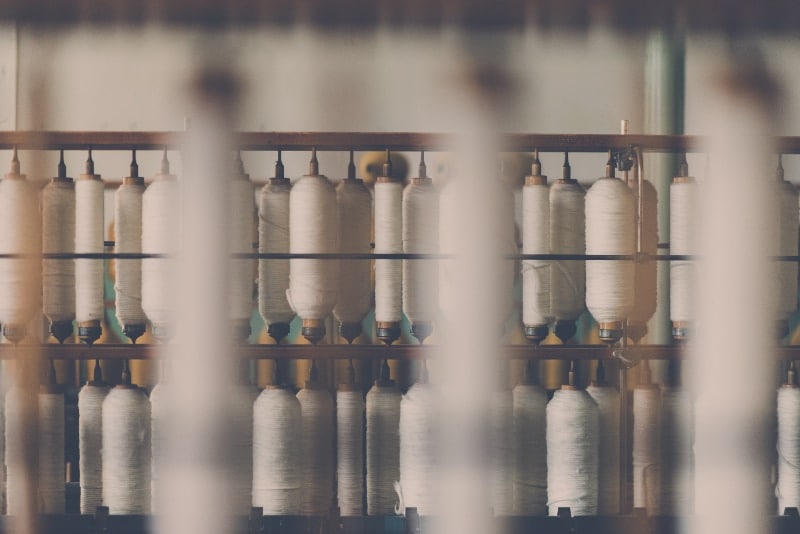
Garment platform Sewport divides this process into at least six steps
- Extracting the Cellulose – The trees are cut into small chips, about the size of a postage stamp. Cellulose is then extracted by purification and shaped into sheets.
- Steeping the sheets – The sheets then go through a first round of steeping in Caustic soda.
- Breaking into crumbs – The sheets are turned into crumbs so they could be dipped in carbon disulfide, forming sodium cellulose xanthate.
- Creating fibers – This cellulose xanthate would be re-immersed in caustic soda to create a syrupy substance that should be immediately spun into fiber.
- Forming the yarn – The Fiber is stretched and formed into yarn after being soaked in sulfuric acid. This yarn should be washed, rinsed, spun and dried before being put on spools.
- Finishing – Necessary treatments are made on the yarn before it is woven into fabric.
The finished modal fabric is praised for its durability. But many also praise its method of production. This rigorous process creates a fabric thought by many to be eco-friendly and sustainable.
Is Modal Fabric Sustainable?
Modal is not sustainable or environmentally friendly by itself. Taking into consideration that trees have to be cut down to create the fabric, the source of these trees should also be taken into consideration. As with most products, the manufacturers decide whether it would be eco-friendly by their methods.
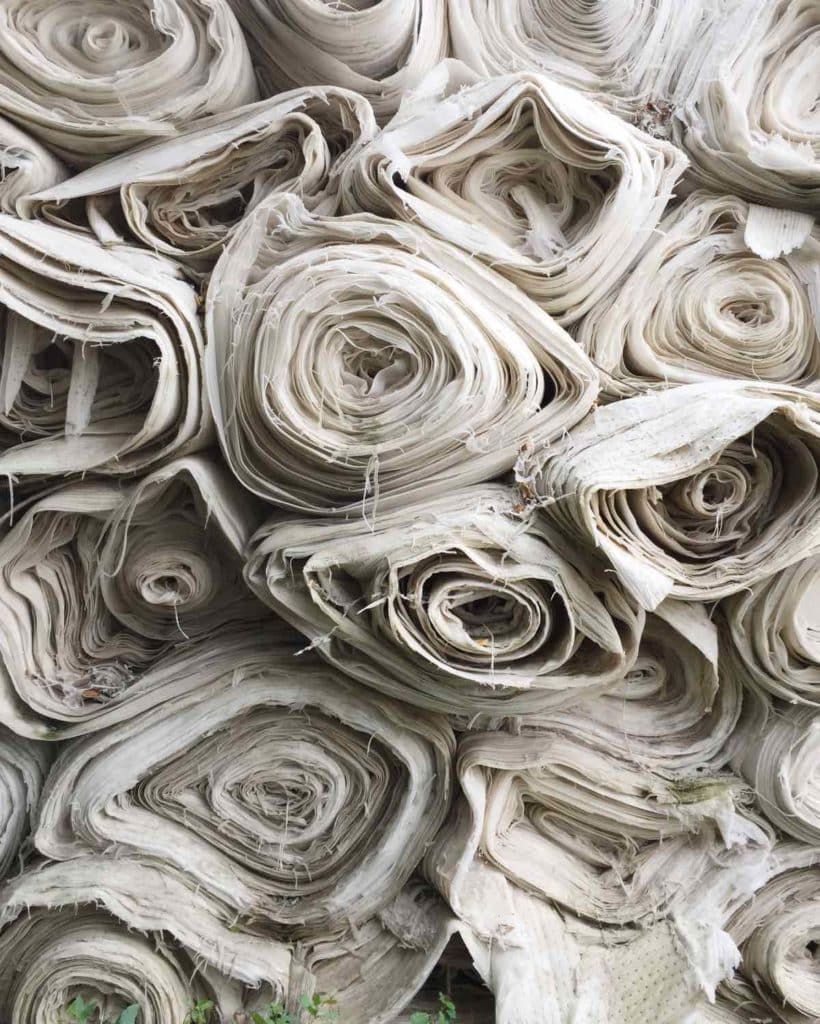
In 2014, a study from the Journal of Cleaner Production stated that spun-dyed modal fabric has 50% lower energy use, 60% lower carbon footprint and requires only 50% of water. It also has significantly lower environmental impacts, approx. 40-60%, compared to the conventionally dyed fabric.
Just like any viscose, turning wood into fabric has the dangers of depleting local forests although Sewport claims that most manufacturers “only use cellulose from trees that have been grown on land that is not suitable for any other agricultural purposes”.
A common misconception is that cotton is more eco-friendly than man-made fabrics as it occurs naturally. But cotton uses significantly more water in manufacturing than modal. The process allows for dangerous dyes and chemicals to go into the water that is released back into the environment.
The claims of sustainability are not without backing though. Manufacturing of modal uses fewer chemicals and water making it slightly more eco-friendly than viscose. Even better, the use of machines and scrubbers to trap these chemicals is getting popular among rayon manufacturers. Alongside its sustainability in manufacturing, modal has many more benefits.
What Are The Benefits Of Wearing Modal Fabric?
Aside from the sustainable benefits of modal fabric, it is also a very comfortable fabric to wear. You can rest assured that your desire to minimize your carbon footprint will not prevent you from having stretchy and soft clothes.
Besides, a 2009 study from the Textile Research Journal found that modal provides good air circulation due to its fibers and fabric properties. Therefore, below are the benefits of wearing modal fabrics.
- Stretch – Modal fabric is very flexible and stretchy, a perfect fabric for t-shirts, underwear, and athletic wear. The stretchy nature of the modal fabric also provides a greater range of movement, limiting the chances of fabric tearing.
- Breathable – Modal is amazing for both sportswear and everyday clothes as the weave is breathable. It is particularly perfect for summer clothes as who wants their clothes to stick to them in the summer heat, right?
- Water Absorbent – Compared to natural fibers such as cotton, Modal is approximately 50% more absorbent than cotton. The absorption quality of the modal fabric is due to the micropores within the fabric. Together with the breathability of the fabric, modal is one of the best for summer and athletic clothes.
- Soft – Another benefit of wearing modal fabric is how soft it is. The fabric is not only ideal for underwear, period panties, and clothes, but also for bedsheets, duvet covers, and blankets. The softness and water-absorbent properties of modal fabric also provide the perfect combination for towels.
- Durable – While modal fabric is biodegradable, its lifespan is still as strong as natural fibers like linen. The strength of modal comes from the tight weaving pattern and long cellulose fibers that are used during production. Therefore, the staples in your wardrobe would be better in modal fabric.
- No Shrinkage – The semi-synthetic nature of modal fabric prevents it from shrinking in the wash as it is strong when wet. However, it is better to wash the fabric in warm water which is both environmentally friendly and safer for your clothes.
- No Creases – Unlike natural fibers such as linen and silk, modal does not crease easily. This makes it convenient if you don’t like ironing and going out in creased clothes. Folding the clothes after drying is more than enough to prevent creases from forming.
- No Color Bleed – The water-absorbent properties of modal fabric ensures that any dye adheres to the fibers properly. This prevents any color bleed from your items, reducing your chances of color transfers in the wash. However, it is still recommended to separate your whites from your colors to further minimize the risk.
- Good Draping – Like silk and rayon alternatives, modal gives a beautiful drape. The draping of the fabric gives an elegant and expensive touch to clothes or decorations.
- No Pilling – Modal fabric has no pilling, no matter how many times you wash the item. Unlike the woolen knitted fabrics in your wardrobe, modal has a smooth finish that stops it from pilling.
- Mosquito Repellent – Interesting fact: modal fabric shows some natural mosquito repellent properties when blended with some herbal extract. A 2018 study by the Journal of Manmade Textiles stated that 100% modal fabric with the herbal extract had good mosquito repellency with no allergic reactions found.
While modal fabric is one of the best on the market, there are some disadvantages that come along with it.
What Are The Cons Of Modal Fabric?
However, like any other fabric on the market, modal has some drawbacks that should also be mentioned to allow you to make an unbiased judgment on the fabric. One of the major drawbacks is that some people are prone to allergies to the modal fabric.
While there is not much data on the allergic reaction of modal, you may experience some itchiness and rash if used for the first time. Therefore, we recommend always washing the items, no matter what fabric is used, before wearing them.
Although modal is more sustainable than cotton and viscose, clothes made from modal are on the expensive side. This is due to the long process and greater care provided from extracting cellulose to weaving and dyeing the fabric.
If you want to spend time in the sun with your modal fabric, we recommend you wear sunscreen. Modal has a lesser UV protection compared to other fabrics, as stated in a study from the International Journal of Engineering Research & Technology (IJERT).
Another disadvantage is the debatable durability of the fabric. Some lower-quality modal fabric can be prone to be stretched out after several wears. The stretchiness and softness of the fabric can also cause some tiny holes in your clothes due to wear and tear. Therefore, our next heading will guide you to properly care for your modal fabric.
How To Care For Modal Fabric?
Modal fabric is an easy fabric to take care of.
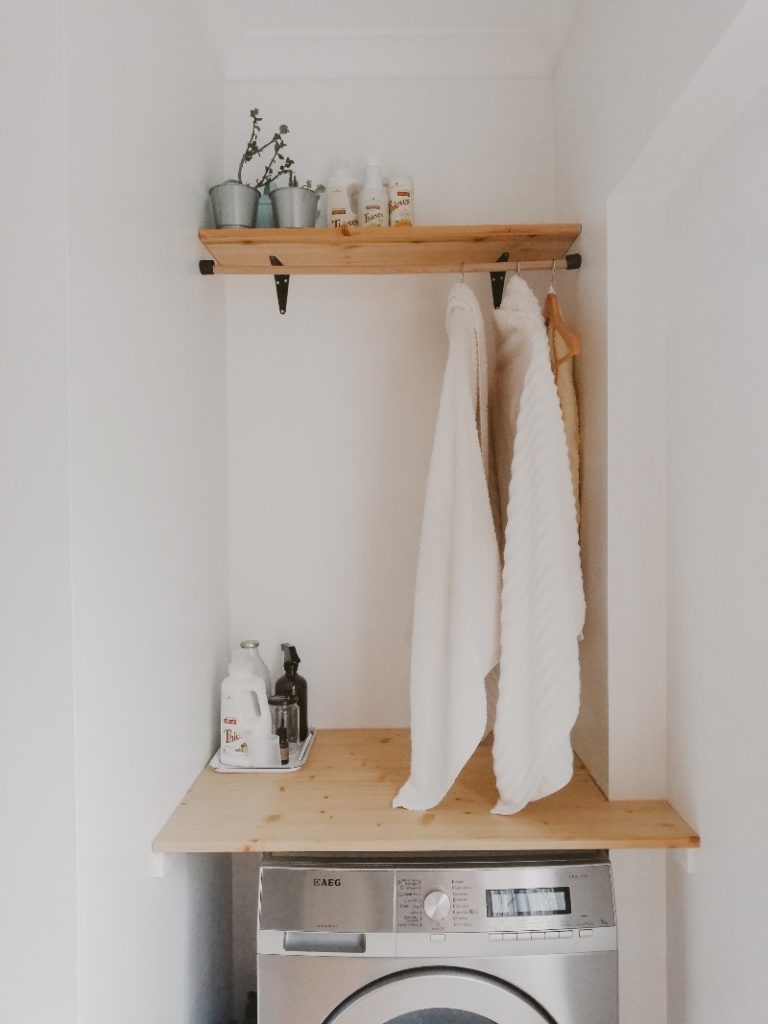
However, there are some precautions to take if you want to extend the lifetime of your clothes.
- Choose the delicate cycle setting on your washing machine.
- If you are washing linens and towels made of modal fabric, you can select the regular cycle.
- The temperature should be less than 40℃ or 100℉.
- The spin should be on low-medium.
- Add your laundry detergent according to your load size and machine. Use laundry detergent sheets if you want a more sustainable option.
- While modal can withstand tumble drying on the medium setting, it is better to line dry the fabric.
If you prefer tumble drying, the strength and durability of the fabric can tolerate low-medium heat dryer cycles. However, to prevent any accidental shrinkage, it is better to treat your modal fabric clothes as you would like cotton and linen. Therefore a low heat tumble dry is best.
You can also steam the fabric to remove wrinkles and have the best finish. This ensures that the fabric will last longer. While you can iron the fabric, a good rule of thumb is to hover over your clothes using the stream setting. You can also press the clothes using the medium temperature setting to ensure that the fabric will not melt or burn.
When storing your modal fabric, it is better to fold your items rather than hanging them. The stretchiness of the fabric could result in distorting the original shape of your clothes when hung. Do not keep your clothes in plastic bags as it traps moisture leading to mildew and yellowing of the garment.
Brands That Use Modal Fabric
From luxury brands to indie designers, modal conquered it all! As companies around the world are trying to go greener, customers are also making the conscientious decision of buying more sustainable and cruelty-free clothing.
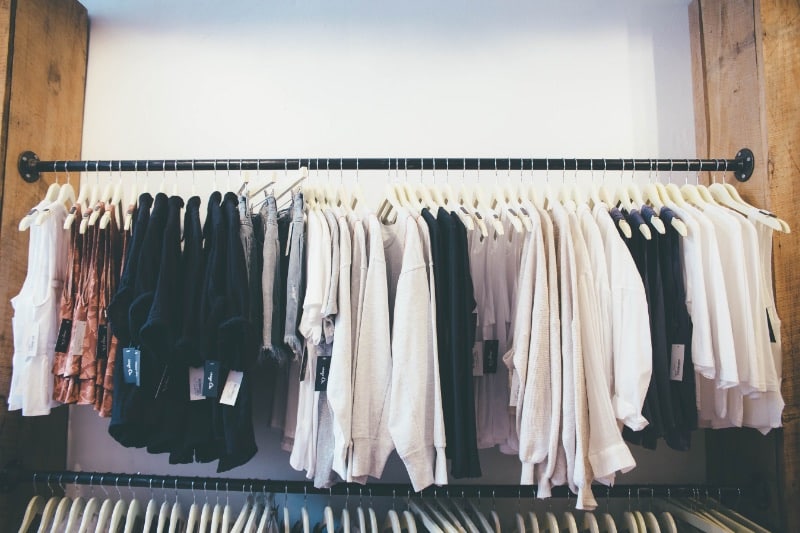
Therefore major sustainable clothing brands that you definitely know are going modal. Below are a few of them and what makes their garment stand out from the masses:
Lululemon
One of Lululemon’s best-selling items, the Surge Joggers, is made from modal, nylon and lycra. Those joggers are well appreciated, as they can replace sweatpants in the gym and can look classy when worn with a shirt and a belt. Cheaper variations also emerged following the spectacular success of the surge joggers.
Banana Republic
Banana Republic settled on the vintage-classic side with the “slim traveler pants” made of 32% modal and 58% cotton. This fashion decision allows the traveler pants to keep their cottony look while having the elasticity and durability of modal. Inspired by the Lululemon Surge Joggers, the slim traveler pants are keeping a standalone identity for a gentleman market Lululemon has trouble covering.
Calvin Klein
Calvin Klein also adopted modal for their microfiber boxer collections. Customers love them because of their glossy look and slim fit that doesn’t feel as tight. Customer reviews suggest taking a size above if you are an active person. That viral underwear also sells for the modest price of $30 with free international shipping, which makes it accessible to everyone’s budget.
What Are Some Other Semi-synthetic Fabrics?
Semi-synthetic fabrics result from chemical processes aimed at transforming naturally occurring fibers into softer or more durable semi-synthetic fibers.
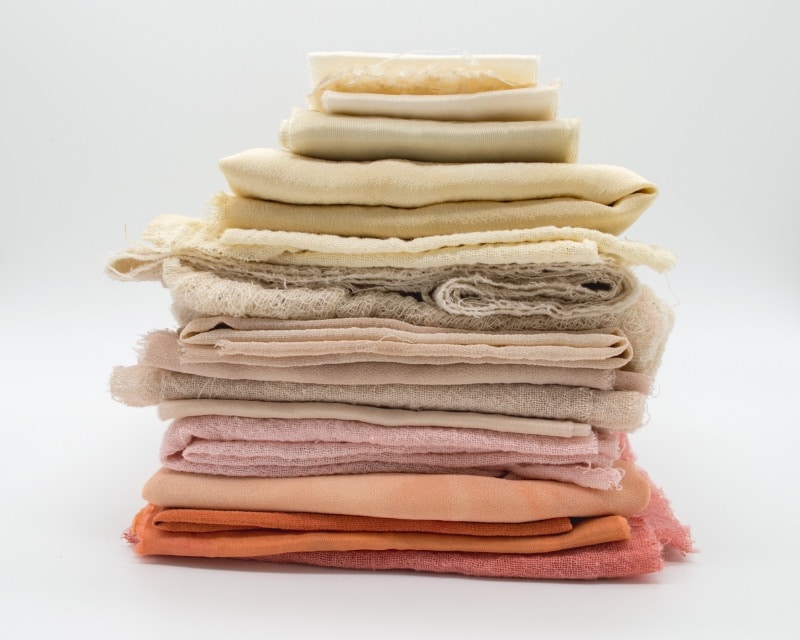
The naturally existing fiber is collected, deconstructed, and then recreated with layers of polymers in-between. This is often performed with cellulose, a structural plant sugar.
Below are some examples of popular semi-synthetic fabrics that you will definitely encounter in a clothing store and what makes them different from modal.
Rayon
Rayon is a general word for a synthetic textile material made of reconstituted, regenerated, and purified plant material, namely cellulose or cellulose derivatives. It is a semi-synthetic fibre since its long-chain polymer structure is already given by nature and is only changed and partly destroyed by chemical processes. Types of rayon include viscose and lyocell.
Cupro
Cupro comprises regenerated cellulose fibres derived from recycled cotton linter; it is breathable and regulates temperature like cotton, drapes gracefully, and feels like silk. Frequently seen in lovely gowns and blouses.
Bamboo Viscose
Compared to the modal fabric where cellulose is taken from beech trees, bamboo viscose uses the cellulose of bamboo. It is also a sustainable fabric as bamboo grows quickly and only needs little water.
However, the chemicals used to treat bamboo cellulose can be harmful to the environment in large quantities. Bamboo viscose is also known as bamboo rayon and is used for sportswear and underwear.
Is Modal Fabric Taking Over Your Closet?
Now that you have a good understanding of what modal fabric is, you can make an informed choice of using the fabric for making various types of clothes and beddings. We advise you to start using it for summer clothes due to its amazing benefits of keeping you cool and dry on a hot day.
However, it is important to know from whom the modal fabric comes from to ensure that it is an eco-friendly manufacturer. This will ensure that you do not play a part in the company’s role in deforestation. If your goal is to leave the smallest carbon footprint possible or just make some sustainable lifestyle changes, modal fabric clothing is the way to go!